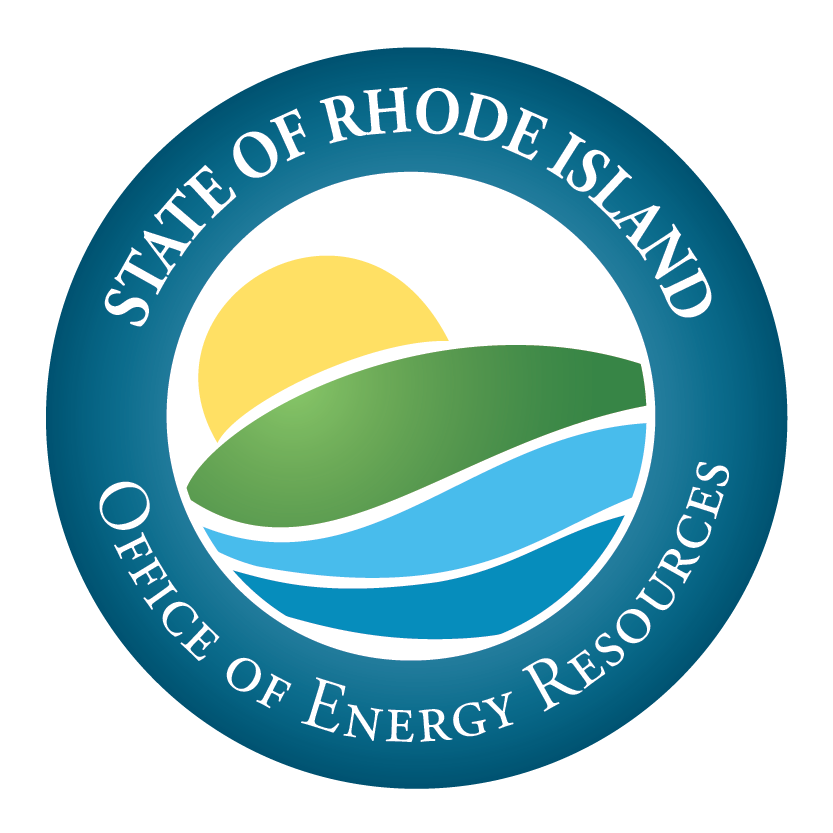Learn About Electricity
The electricity consumed in Rhode Island homes, businesses, and institutions is generated at power plants, transported through a network of high-voltage transmission lines, and distributed via local poles and wires to end users. Rhode Island’s electrical grid is connected to a larger regional power grid composed of more than 350 generating resources (natural gas, coal, and oil-fired power plants; hydroelectric dams; nuclear stations; biomass plants; and renewable energy units like wind and solar), 8,000 miles of transmission lines, and 6.5 million households and businesses that create electric demand throughout New England.
New England’s power grid is centrally managed by ISO-NE, the regional independent system operator. Created by the Federal Energy Regulatory Commission (FERC) in 1997, ISO-NE oversees minute-to-minute dispatch of electricity on the bulk power system, administers the regional wholesale electric and capacity markets, and manages system planning.
Although ISO-NE is responsible for coordinating the interstate flow of power, retail delivery of electricity to consumers within individual states falls to electric distribution companies. Today, three such companies operate in Rhode Island. Rhode Island Energy, the largest of the three, manages the distribution system for 99 percent of the state, serving approximately 486,000 electricity customers with a network of more than 6,000 miles of distribution lines. Block Island Power Company and the Pascoag Utility District serve the remaining areas on Block Island and in western Burrillville, respectively. All electric distribution companies in the state are regulated by the Rhode Island Public Utilities Commission (RIPUC).
In the 1990’s, Rhode Island joined four other New England states in restructuring the electric distribution companies operating in their respective jurisdictions. The Rhode Island Utility Restructuring Act of 1996 required utilities to sell off their generating assets, opening up the wholesale electric market to non-regulated power producers. Restructuring also introduced retail choice, effectively unbundling the energy supply and electric distribution functions of utilities like Narragansett Electric (Rhode Island Energy’s predecessor company). Under the restructured system, customers can remain under a default “standard offer” or “last resort” electric service provided by the electric distribution company or select a competitive supplier for electric service. In both instances, customers continue to receive distribution service from the electric distribution company.
Rhode Island’s restructured retail electric market allows consumers and businesses to choose a competitive power provider for their electricity service, while still relying on the local electric utility for distribution service. Electric distribution companies are required by state law to provide “standard offer” and “last resort” electric service for customers who do not elect to purchase power from an alternate electricity retailer. As of 2017, competitive suppliers served approximately 47 percent of Rhode Island’s electric load.
In Rhode Island, a customer can choose to buy electricity from a company other than Rhode Island Energy or Pascoag Utility District. This is known as customer choice and the other company is known as a nonregulated power producer or competitive supplier. A customer who chooses to purchase electricity from a competitive supplier will still receive a bill from Rhode Island Energy or Pascoag Utility District to cover the cost of delivering the electricity to your home or business. If you are a residential customer, you will not receive a separate bill from the competitive supplier. Instead, the only part of the bill that will change will be the “Supplier Services” portion. You do not have to choose a competitive supplier. You may or may not save money if you switch to a competitive supplier.
Consumers interested in exploring third-party electric supply rates are also encouraged to utilize the RI Division of Public Utilities & Carriers’ Empower RI webtool at: ri.gov/app/dpuc/empowerri.
Rhode Island is home to approximately 2 gigawatts (GW) of electric generating capacity, with six power plants over 50 megawatts (MW). Virtually all major generating facilities in the state use natural gas as the primary fuel. In 2016, natural gas-fired power plants accounted for approximately 98 percent of in-state generation capacity. Many small, distributed renewable energy systems also exist in Rhode Island. These systems harness the power of indigenous, renewable sources of energy such as the sun, wind, and water. As of December 2016, approximately 2,150 distributed renewable energy systems representing approximately 100 MW of wind, solar, and hydropower capacity were installed in the state.
The U.S. Energy Information Administration provides Rhode Island-specific energy consumption and expenditure data. The Rhode Island State Energy Plan provides additional Rhode Island-specific energy information and background.
